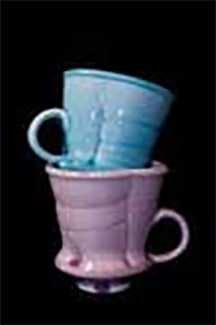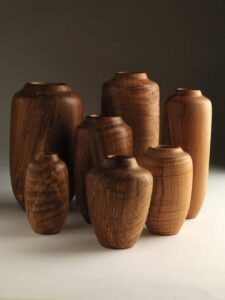AMERICAN FINE CRAFT SHOW BROOKLYN AT BROOKLYN MUSEUM TO INSPIRE HOLIDAY SHOPPING SPREES NOVEMBER 21-22 & VISITS TO EXHIBITIONS
Six Brooklyn artisans will celebrate their creativity, artistry & skill with 84 other exhibitors

Two Brooklyn jewelers, a handbag designer, potter, woodworker/furniture maker and woodworker whose studios are in Fort Greene, Gowanus, Park Slope, Sunset Park and Williamsburg will be among 90 exhibitors at the third American Fine Craft Show Brooklyn at Brooklyn Museum, November 21-22, 2015. The tickets to the show, in the regal Beaux-Arts Court, include general admission to the Museum. The craft show is timed for holiday shopping but not too close to Hanukah and Christmas so visitors can also take in the magnificent current and long-term exhibitions at the Museum.
Ming Yuen-Schat, Mings Monsters, might be speaking for many artisans when he expresses his interest in the interplay between modernism and wabi-sabi. “As an artistic form,” the Fort Greene-based potter, born in Taiwan, writes on his website, “wabi-sabi embraces that which is imperfect, asymmetrical, and deliberately crude, which is diametrically opposed to the influence of commercialized modernism which values slick, high-tech, machine-made objects and considers imperfection to be a defect.” Ming, who has a Masters in Architecture from MIT, describes how he designs and crafts his “monsters,” the bottles, bowls, flower containers, sculptures, trays and vases he makes in his three collections: Jewel, Chalice and Flame. They are “hand-shaped, usually on the wheel, and then altered. Ming’s finger marks are on every monster.” Flames, smoke and ash from a wood kiln paint the pots with color and texture.
After graduating from the Rhode Island School of Design’s [RISD] furniture design department, Richard Haining, woodworker/furniture maker, whose studio is in Williamsburg, worked for a leading Brooklyn-based set shop. His training at RISD, which steeped him in the study of ceramics, jewelry, glass blowing as well as his specialty, contributed to his success in the set industry then, and now, designing and creating his own decorative vessels and furniture. His experience with ceramics is evident in his “Stacked” collection of vessels made of salvaged walnut. “I mill down the material, cut it to size, stack it, glue it and position it to create a rough form and then by hand I shape the exterior.” The finish: a custom oil/polyurethane blend. Haining said that this collection “evolved from the over-abundance of scrap material being thrown out in the shops I worked in.”
Phil Gautreau transforms reclaimed domestic and exotic hardwood pieces into clean, contemporary shapes that highlight the wood’s natural grain, color and figuring. The wood for Gautreau’s bowls, bases and serving boards comes from many sources: cutoffs from furniture and lumberyards and from locally downed trees. His studio is in Gowanus.

Jeweler Christine Mackellar has maintained a design and production jewelry studio in Brooklyn’s Gowanus section since 1980. She writes on her website that her jewelry is handcrafted at the bench from gold and silver using time-honored techniques. She specializes in natural forms—leaves, blossoms and twigs—for her bracelets, earrings, necklaces, pins and rings. Recipient of awards and recognition, her work has been included in countless gallery exhibits and juried craft shows. In 1993 Mackellar, who is also a member of the American Craft Association and Society of North American Goldsmiths, was commissioned to create a White House Christmas ornament.
Born in Brooklyn, Louise Fischer Cozzi, whose studio is in her Park Slope brownstone, was trained as a graphic designer and designed and sewed quilts before becoming a jeweler 24 years ago. She writes on her website that her “love for typography and fiber arts inform her work.” In addition, she “forms simple elegant shapes of translucent clay and infuses them with layers of texture and color that suggest infinite depth.” Beth Levine hand cuts, hand shapes and machine stitches leather–hallmarks of her handbag collections. To the handsome silhouettes she designs she uses color–either saturated or muted–in combinations such as red and pink or olive and tan, or solids such as turquoise. Her early training in sewing and later, her studies in surface design, help her achieve visual impact whether she adds color blocking, appliqué, top stitching, beading, quilting or filigree on tanned and dyed fine leather. She maintains a studio in Industry City in the Sunset Park section of Brooklyn.
Discount tickets are available in advance on line: http://www.americanartmarketing.com/buy-tickets.php.For more information visit www.brooklyncraftshow.com.








